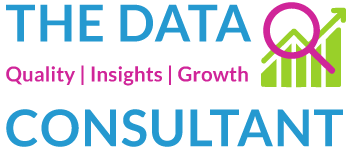For small to medium-sized businesses, selecting user-friendly and cost-effective data analysis tools is crucial. Microsoft Excel is a fundamental tool that supports a wide range of data analysis tasks. Pivot Tables are a great way to visualise data quickly and easily. Microsoft Excel also has a range of Data Analysis functions such as WhatIf Analysis, Forecasting and Solver that business users can upskill on pretty quickly. For more advanced analysis Microsoft Excel has a Data module that will create Descriptive Statistics, Histograms, Correlations and Regressions.
PowerBI, Google Data Studio/Looker and Tableau are some of the tools that can help you visualise your data. You can build interactive dashboards with metrics, charts, trendlines and heatmaps that will help you manage your business. Although these tools are easy to use from an end-user perspective, there is an amount of set-up involved in creating the dashboards. The setup can become complex if you need to blend different data sources, do transformations such as changing data types or create custom calculations.
R and Python are advanced programming languages, that will typically be used by Data Scientists for statistical analysis or predictive analytics.
Google Analytics provides valuable insights into website traffic and customer behaviour online and I recommend that all business websites are connected to Google Analytics.
Most CRM (Customer Relationship Management) ATS (Applicant Tracking System) and Marketing Automation software will include an element of data visualisation in the form of dashboards. These are usually ready to go but you may need to configure the set-up. It is important to have a single customer view across data sources to build up a full picture of customer interactions.
The advances in AI (Artificial Intelligence) are coming along very quickly and there are new updates and releases regularly. At the time of writing Chat GPT4 has a very powerful ability to analyse an uploaded data set. However, unless you are using Enterprise versions, be very wary about uploading any commercially sensitive data and I would recommend not to upload any personally identifiable information (PII) until all Data Protection and Privacy regulations are addressed.






0 Comments